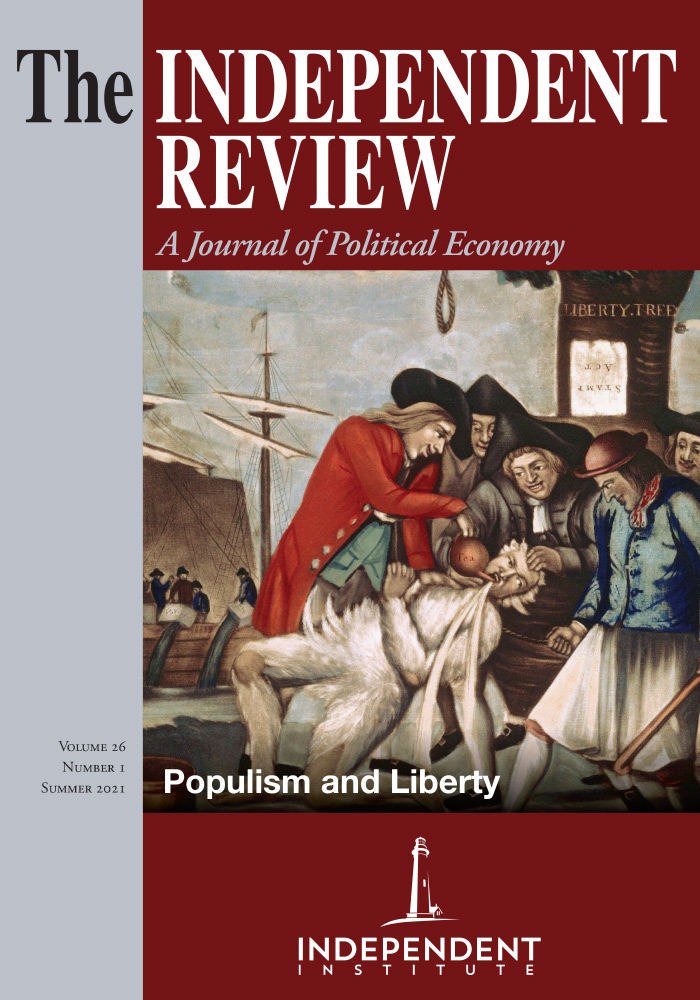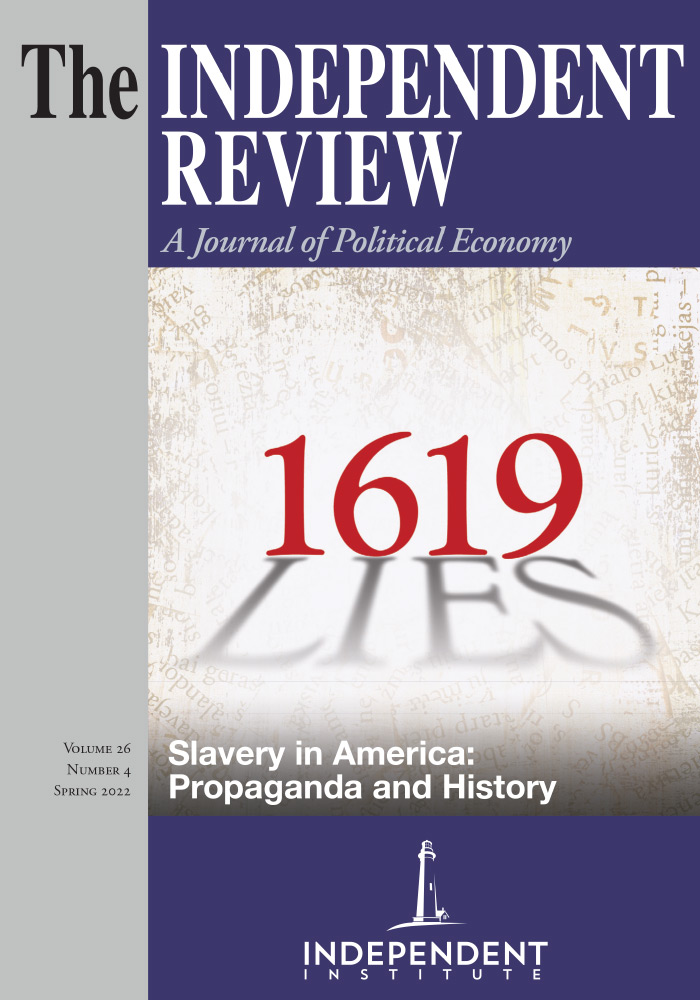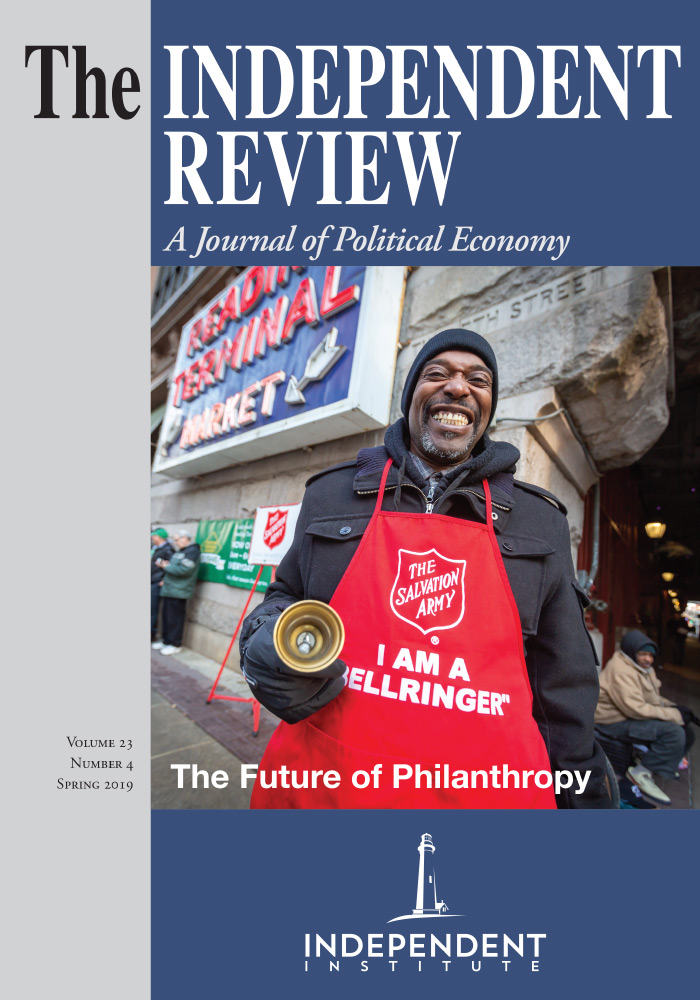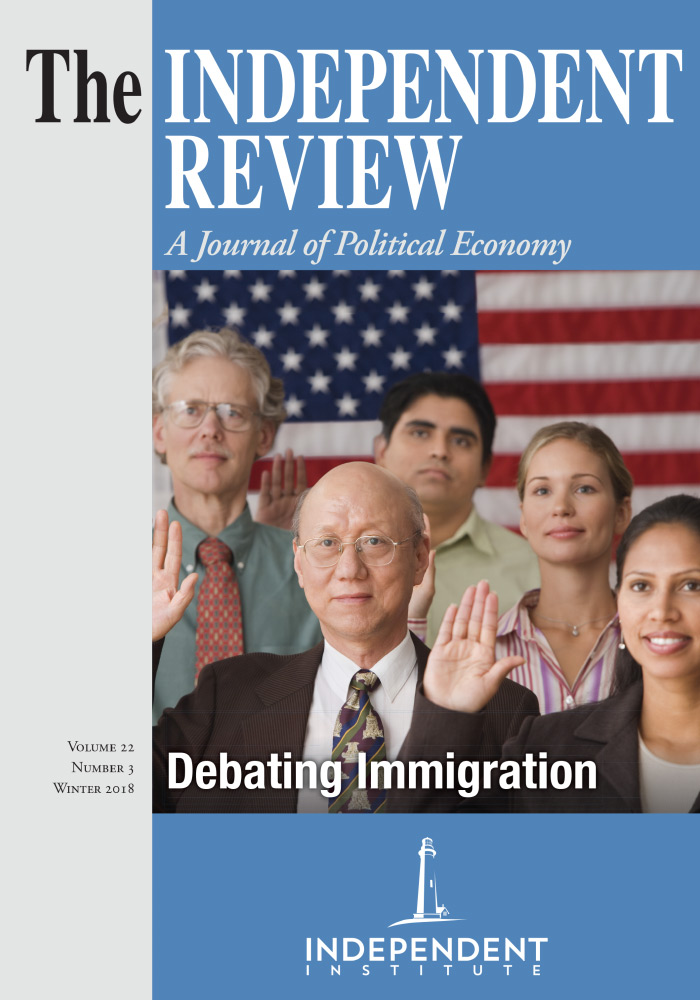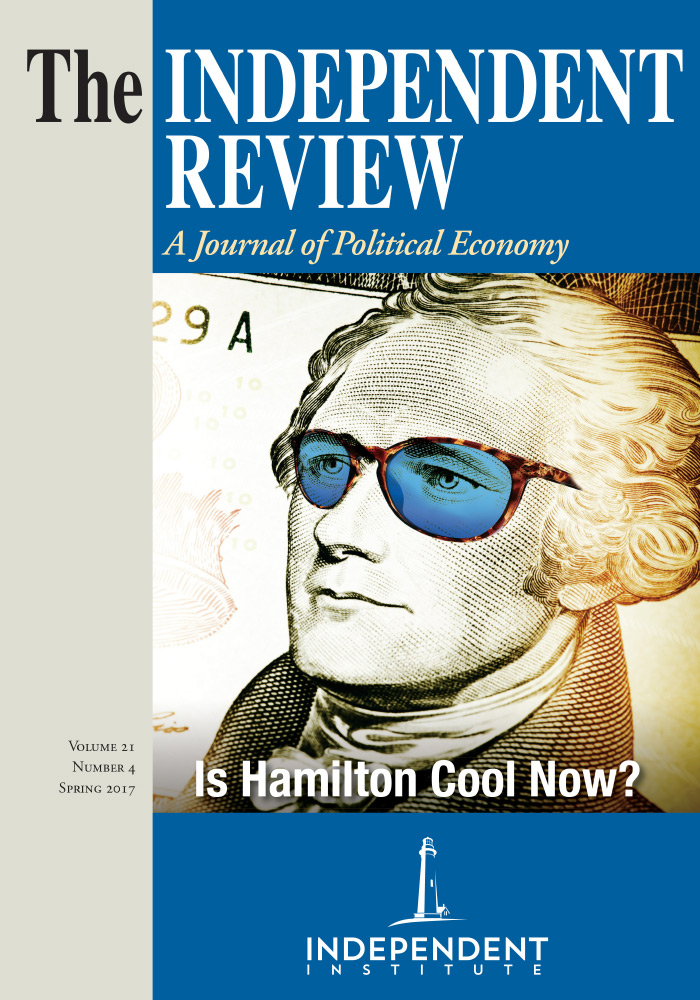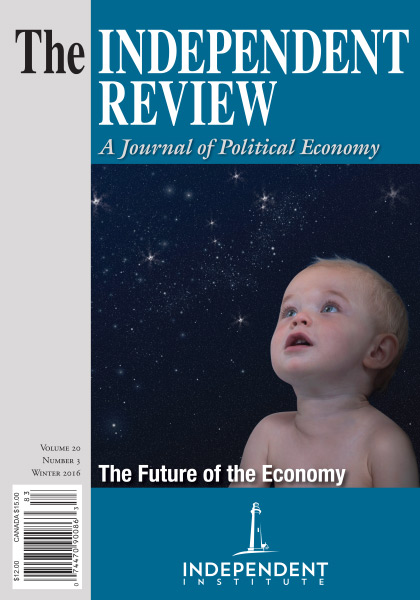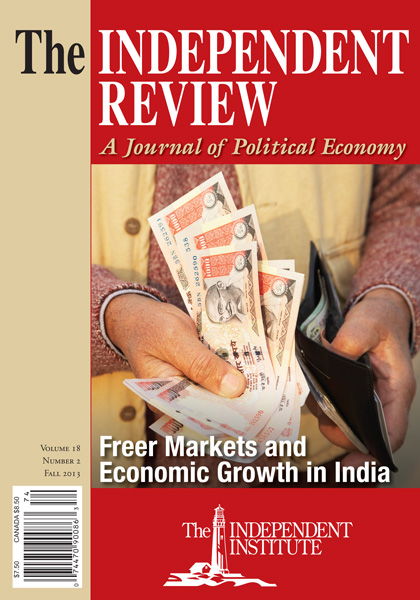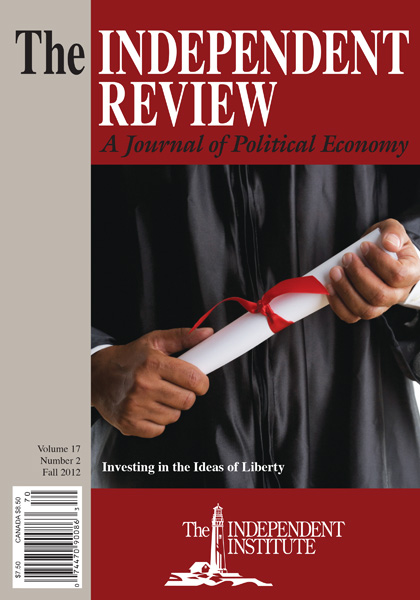James L. Payne’s new book, The Big Government We Love to Hate: Exploring the Roots of Political Malaise, investigates the paradox of the love-hate relationship Americans have with government.
In his words, “This is the political malaise of the modern age: the public has lost confidence in big government, but wants more of it. People have lost confidence in public officials, and disparage them at every turn, yet they want to put more responsibilities in their hands,” an inconsistency whose basis is “a deep, nonrational loyalty: an attachment to government that can be called a cultural presumption ... a widely shared, unquestioned conviction that emerges over many centuries of historical evolution” (p. 3).
What is that conviction? “Government is society’s natural and proper problem-solving agency . . . the competent authority presumption” (p. 5). Given that, “We don’t ask how ... We don’t need to examine the moving parts.” We act as if “all we have to do is wave our hand and ask government for it” (p. 9).
Payne argues that “The prevailing beliefs about government, about what it is and what it can do, are flawed,” so that “As long as we maintain those assumptions and expectations, we are bound to get a government that we disparage, but which, at the same time, we continue to embrace” (p. 1). Consequently, he proposes to lay “unthinking attachment to the idea government is society’s natural problem-solving system” against “a close look into what government really is and how it operates, [which] reveals that this institution has many shortcomings as a problem-solving agency, and is therefore an unsuitable manager in most of the areas we have entrusted to it” (p. 5).
Payne’s focus is on “the key question humans should have been asking,” but generally have not. “Is government a rational, responsible, effective problem-solving agency?” (p. 29). This leads to a situation where “The criticism of government agencies, policies, and personnel is not marshaled as an argument for reducing the role of government ... failurists remain steadfastly committed to big government” (p. 19). In contrast, he argues that hope lies in “The libertarian’s approach,” which is “to identify a government malfunction, and to use this critique to buttress his conclusion that government should end, or at least, reduce, its role in that policy area, and in other areas” (p. 19).
Payne’s arguments have several aspects worth noting.
Payne makes effective use of simple syllogisms to get several points across, such as the post hoc, ergo propter hoc fallacy that a government intervention caused a positive result because it began before that result (pp. 69, 73) and the null alternatives fallacy of “assuming that government is the only possible problem-solving agent in society” (pp. 82-84). However, I believe the most effective one addresses the traditional public goods justification for government intervention. There the connection between “A public good will be insufficiently provided under free-market voluntary conditions” and the conclusion that “Government should employ its use of force (taxation) to provide this public good” is initially labeled a “hidden assumption,” representing “the missing premise, which is the idea that government is a rational, responsible, and effective problem-solving agency.” Then he replaces the hidden assumption with “Government is an irrational, irresponsible, and ineffective problem-solving agency,” which renders the traditional conclusion invalid (p. 43).
Payne also effectively addresses “the presumption of program success ... the tendency to believe, in the absence of any meaningful evidence, that a government initiative ... has accomplished its stated aim” (p. 75), which results in “many examples of commentators who have looked rather deeply into how government programs function, and they have concluded that the results are extremely disappointing. Nevertheless, these same commentators routinely assume that other programs, programs they have not studied, have been successful” (p. 76).
Particularly instructive is the case of Peter H. Rossi, co-author of Evaluation: A Systematic Approach, now in its seventh edition. In a 1987 article, he summarized the findings of extensive scientific evaluationsof Great Society programs as demonstrating that “designing successful programs is a difficult task that is not easily or often accomplished” (p. 77). Poor outcomes were so common that he enunciated “The Iron Law of Evaluation,” that “The expected value of any net impact assessment of any large-scale social program is zero,” because few “have been found to be even minimally effective” (p. 78). Yet despite his own Iron Law, he concluded that Social Security and Medicare, which he had not studied in a rigorous, scientific way, were “spectacular” successes (pp. 79-80). For a more accurate view, see Edgar K. Browning, “The Anatomy of Social Security and Medicare,” The Independent Review 13 (Summer 2008): 5–27.
Payne also addresses the “without government there would be ‘chaos’” assertion, which traces back to Thomas Hobbes’ Leviathan. It attributes reductions in violence to the existence of governments with unbounded powers to restrain it, which James Bovard (“The Never-Ending Battle between Leviathan and Liberty,” Mises Wire (March 18, 2021) describes as “suicide pact sovereignty.” Payne counters with the alternative hypothesis that “Domestic peace is the result of a long-evolved cultural disposition to avoid the use of force” (p. 96), that “social trends and economic realities, not government’s laws, are the underlying determinant of changing patterns” (p. 72), which precede changes in laws and regulations. Further, he notes that in a high-violence culture, “government, and the struggle over control of government, is the source of the violence and destruction we call chaos” (p. 97). So, contrary to Hobbes, he concludes that while “organizations that react to the use of force are needed in society,” that “does not imply that these units should be involved in any other activities” (pp. 97-98).
The use of force in society then becomes the focal point of Payne’s analysis, because “To be a really thoroughgoing critic” of government, “the analyst needs to focus on government’s fundamental defining characteristic, its basis in force” (p. 118).
Since “Government ... is the organization that directs the regular public use of physical force in a territory, makes rules upheld with the threat of force, and employs the threat of force to raise funds,” we must ask “Is force a promising foundation for effective social problem-solving?” (p. 50). Payne then enumerates “an abbreviated list” of 19 limits and weaknesses of “the use of force as an agent of social control” (pp. 51-64), concluding that “they rather clearly imply liabilities for government as a problem-solving agency” (p. 64), in contrast with those who “have vaguely waved at government as the national savior without listing the government’s properties and explaining how these features enable it to produce an effective solution” (p. 66).
Widespread opposition to the use of force is then the lever by which Payne believes the presumption that government is society’s natural problem-solving agency might ultimately be overcome. In that, libertarians are cited as crucial influences, because they are the outliers from the majority, who “doggedly avoid recognizing government’s basis in force” (p. 126), when only a clear focus on government’s unjustified use of force, which people deplore, can ultimately upend the unquestioning faith in government that so many people maintain despite its manifold failures.
In fact, Payne’s final chapter notes how historically recent is “the freedom to criticize government” (p. 136), opening the way for libertarian arguments to reach the public. He argues that “the movement away from the faith in government as the national problem-solver ... begins with a handful of thinkers, and a small number of activists—who are viewed with disdain and alarm. But then, many years later, the cultural presumption has been overturned, and everyone looks back and says, ‘How on earth could people have believed that?’” (p. 138). I think many libertarian think tanks see their role in a very similar light.
Consequently, Payne believes that a “Neighbor” ideal, growing out of the facts that “big government contradicts widely shared, widely valued social principles” (p. 138) and “The use of physical force and the threat of force to control the behavior has many disadvantages” (p. 139) could eventually displace the current cognitive dissonance of persistent unfounded faith in a government that, as Herbert Spencer (Gary M. Galles, “Herbert Spencer Explains the Difference Between Politics and Private Enterprise,” Mises Wire, [April 27, 2017]) put it, is “ever failing, making worse, or producing more evils than it cures ... and perpetually disappoints everyone.”
In sum, The Big Government We Love to Hate: Exploring the Roots of Political Malaise is interesting and insightful. It addresses an important phenomenon that I have often also wondered about in 35 years of writing about public policy, and its focus on governments’ constant use of force against those they say they serve offers a path toward changing the public’s unfounded faith in an entity that serially abuses them. That certainly makes it worth reading. But it does have one failing that jumps out at me. Despite Payne’s endorsement of libertarian thought and opposition to coercion, he provides very little in the way of references to spell out those argument more fully. There are a few brief mentions (e.g., Frederic Bastiat, Herbert Spencer and Auberon Herbert), but many important contributors do not even appear in the index. For instance, Gustave Molinari, Ludwig von Mises, Murray Rothbard, and Leonard Read are nowhere mentioned, much less current libertarian scholars.
| Other Independent Review articles by Gary M. Galles | ||
| Fall 2020 | Charter Schools and Their Enemies | |
| Spring 2020 | Do Markets Corrupt Our Morals? | |
| Spring 2018 | The Political Spectrum: The Tumultuous Liberation of Wireless Technology from Herbert Hoover to the Smartphone | |
| [View All (5)] | ||

